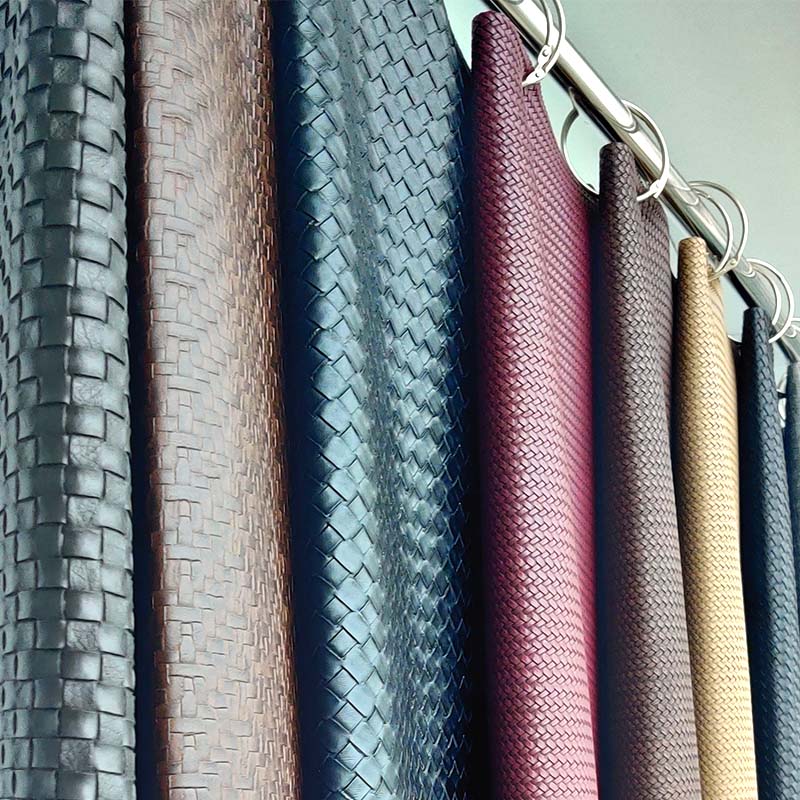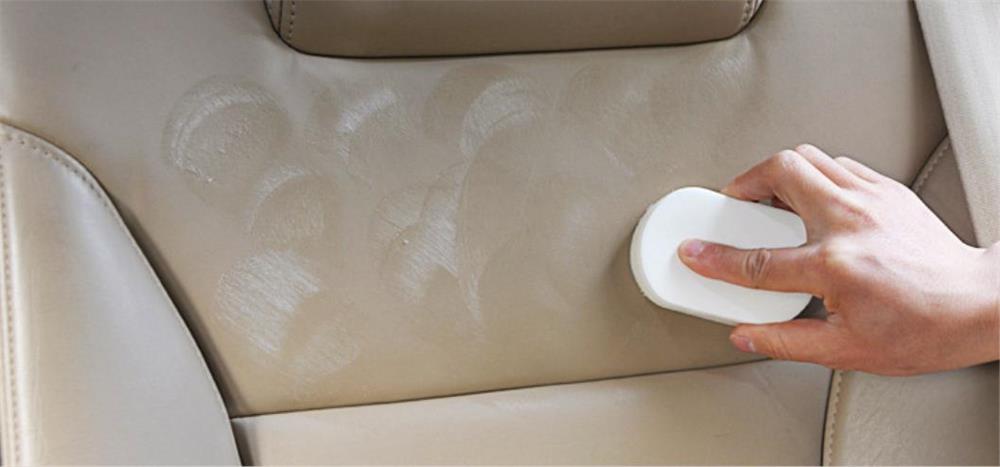To revisit this article, visit My Profile, then View saved stories.
To revisit this article, select My Account, then View saved stories Synthetic Leather Companies

Decorating with velvet furniture gives your space a bold style statement, but it can turn into an eyesore if you don’t know how to clean velvet. The plush upholstery has a commanding presence—there’s no ignoring its soft sheen, rich color, and innate elegance—but it also means that any discoloration or stains are that much more visible. No more hiding a dusty apartment; once the sunlight hits a velvet couch, those annoying allergy-inducing particles become the star of your decor.
To take back velvet’s panache without having to resort to a professional cleaning, you only need a few tricks, especially when it comes to DIY spot cleaning. “Cleaning procedure is more important than any specific cleaning product,” says Patrice George, associate professor of textile development and marketing at the Fashion Institute of Technology in New York.
If you want to know how to clean velvet, follow this simple step-by-step process outlined by George and Anne White, Anthropologie’s head of home interiors personal styling, and this luxe textile will remain the centerpiece of your space.
The easiest and fastest way to clean a velvet couch is by vacuuming it with a soft brush attachment, but if you have spills, follow these instructions. First, get rid of the liquid ASAP with an absorbent cloth, or a paper towel, by blotting until the moisture is removed. “Gentle rubbing with a damp cloth will help clean most spots,” George says. “Adding a drop of mild detergent or mild shampoo might help clean plant-based or animal fibers like cotton or linen. Polyester, nylon and wool will resist absorbing moisture but will retain oil-based stains like coffee. Spot cleaning [sparingly] with a home dry-cleaning solvent can help.”
Once the velvet upholstery is dry, you can vacuum again, then brush the textile into shape. Just make sure the brush bristles aren’t too stiff. “Any soft- or medium-bristled brush can be used to maintain a velvet fabric’s nap, remove lint or pet hair, or refresh surface texture after cleaning or steaming,” George says.
Here, a step-by-step process for a regular velvet cleaning.
Vacuum up dust, lint, and pet hair as a first step to cleaning a velvet sofa.
To tackle those pesky dust particles regular dusting and vacuuming are key to velvet upholstery maintenance. White recommends a soft brush to loosen surface dirt and brush it away.
Carpet cleaner vacuums can sometimes be effective on velvet, but, as always, read the cleaning instructions and first test on an inconspicuous area. “Many home carpet cleaners have appropriate attachments and lower power modes to be used on upholstery,” George says.
If a friend happens to spill their cocktail on your velvet couch, White suggests blotting the area immediately with a clean, dry absorbent cloth. (Then mandate said friend to a different spot in your home as the velvet sofa air dries. No one likes a party foul.)
If a dried stain on the velvet upholstery is staring at you, mix soap and water to create a sudsy solution. Use a soft cloth to blot the stain with the suds, then let the fabric dry completely. Alternatively, a solution of baking soda and lemon juice can tackle a stain-affected area. Carefully apply the mixture to the stain (especially one that may smell), then use a soft cloth to gently rub out the stain. Dab with clean water and allow to air dry. Always test the cleaning product on a hidden spot first, to ensure it doesn’t ruin the material.
A velvet upholstery brush can restore the luster of the textile.
“Once the velvet is dry, use a soft, dry brush in the direction of the pile to restore its direction and loft,” White says. This will give the velvet that brand-new, never-been-touched look. To further preserve the velvet fabric, especially in a bright, richly pigmented color, like navy or chartreuse, keep it away from direct sunlight, which can cause the fabric to fade, White notes. “Consider window coverings substantial enough to protect your piece but lovely enough to catch the eye,” she adds. “The technology for window films, which block the sun’s rays without blocking your view, has improved and may be another avenue to explore.”
When in doubt, ask for help. “It’s best to professionally clean the entire piece to ensure the color remains uniform,” White explains. “To ensure velvet furniture remains in optimal condition, you should have it professionally cleaned with pure, water-free solvents.” Next up? Sit back, relax, and enjoy your good-as-new upholstery.
When it comes to knowing how to clean velvet home goods, the right cleaning products and tools are key. Here is a list of vetted options.
Before you tackle any particular velvet piece, always read the label with cleaning instructions. The important thing to keep in mind about velvet is that you should not smush it or otherwise ruin the pile. And always you have to take into account what it’s made of: “Anything that requires long-term heavy pressure will crush the velvet pile permanently,” George says. “Anything that requires excessive abrasion or suction might remove pile from the surface. Anything that requires high heat could damage synthetic fibers or singe natural fibers. There may be special finishes, dyes, backings, zippers, buttons, or other added components that could influence cleaning and care decisions.”
If you’re absolutely dying to toss velvet drapes into a washing machine, stop yourself right now. Velvet is considered a dry-clean-only textile, whether it’s upholstery on a chair or the fabric of a fancy dress. “Because the surface pile is composed of cut fibers, wet washing, especially by machine, will cause the pile to loosen and shed. Dry cleaning or spot cleaning with a non-water-based solvent cleaner is recommended for upholstery velvets,” George says. “Wet cleaning or machine washing will give the fabric an aged or vintage appearance at best and cause the pile to pill or fall out.”
To deep-clean velvet furniture pieces employ the help of a professional carpet and upholstery cleaner every year or two (more frequently if your home has pets and children). “Professionals use special low-moisture cleaning methods that will deep-clean your upholstered furnishing to remove allergens and embedded soil, and would understand any special setting that your velvet upholstery might require,” George adds.
In a word, no. Before you embark on a velvet cleaning odyssey, figure out whether or not you actually have genuine velvet. There are also different types of velvet, like cotton velvet or polyester velvet, and that may affect how you clean velvet furniture, as well. “True velvet is a woven fabric that resembles animal fur and has two distinct sides,” George says. “The top surface, or pile, is created by cut fibers that stand up almost straight, like a toothbrush. The back side is a tightly woven plain fabric that holds the cut fibers in place.”
There are fabrics that mimic or are similar to velvet but aren’t actually velvet. One of the two you’re likely to encounter is velveteen, a woven fabric with a shorter, flat pile. Then there’s velour: a knit fabric with a pile surface that resembles velvet but is lighter and has more stretch and less durability — “often used for home textile accessories, slipcovers, bedding, curtains, and other applications that will not be exposed to as much surface abrasion or tension as upholstered seating,” George says.
Even if you’re 100% sure you’re dealing with genuine velvet, there’s a wide range of types of velvet that can vary considerably by fabric weight, which also indicate how well-made and how durable your velvet is. There’s lightweight (mostly used for drapery and accessories), medium weight (considered to be residential quality); and heavyweight, which is the commercial grade of velvet. Because it has to stand up to a lot of wear, velvet used for upholstery is much heavier and stiffer than that designed for velvet clothing. (That tends to go for velvet items like drapes too—sorry if that dispels any Scarlett O’Hara fantasies.)
Finally, true velvet is also differentiated by fiber content and can range from 100% cotton in both backing and pile to 100% polyester or polyester microfiber in both backing and pile. You may find cotton backing with pile that can be cotton, polyester, rayon or linen. “High-end, luxury velvets may have mohair, cashmere, silk or other premium fibers in the pile, with cotton or polyester backing,” George says.
You may have heard more and more recently about “micro velvet,” which is a fancy way of describing real velvet woven with a polyester microfiber in the pile. “It has a softer, silkier hand than velvet woven with heavier fibers, which is desirable for pillows, bed frames, cushions and soft furnishings,” George says.
You can clean and care for micro velvet like you would any other polyester velvet. Confused about the difference between velvet and suede? Though they’re both prized for their soft, brush-like textures, velvet is always made from a woven fabric, while suede is made from the inside of animal skins.
11 Living Room Design Ideas Designers Swear By
How to Refinish a Table in 5 Steps (It’s Actually Easy!)
39 Kitchen Cabinet Design Ideas to Give Your Space an Ultimate Makeover
How to Clean a Keurig—All You Need Is 30 Minutes and White Vinegar
11 Room Divider Ideas That Add Texture and Function to Your Space
How to Clean Grout and Keep it From Getting Gross Again
50 Functional Privacy Fence Ideas That Look Great in Your Yard
Not a subscriber? Join AD for print and digital access now.

Polyurethane Upholstery Fabric © 2023 Condé Nast. All rights reserved. Use of this site constitutes acceptance of our User Agreement and Privacy Policy and Cookie Statement and Your California Privacy Rights. Architectural Digest may earn a portion of sales from products that are purchased through our site as part of our Affiliate Partnerships with retailers. The material on this site may not be reproduced, distributed, transmitted, cached or otherwise used, except with the prior written permission of Condé Nast. Ad Choices